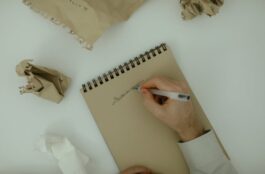What will you do if you discover a killer is living in your house? You’d do anything to get that dangerous thing out of your home. Mold can be a dangerous and quiet killer hiding within your home’s walls. There are several signs to look for to identify the problem and eliminate it so that you can live in safety and security. Let’s review some of these signs.
How To Identify Mold
Mold spores stay in the air both indoors and outdoors. Mold is common; however, excessive exposure can weaken your immune system. Even a minor mold infestation can spread millions of tiny mold spores throughout your home. As a homeowner, you have to figure out whether you have a mold problem and take steps to address it.
1. Smell
Molds identified by odor are most commonly seen in basements or crawl spaces. Household molds have a “musty” or “earthy” odor. If you’ve ever gone for a trip in the woods, you’ve possibly smelled the musty odor of rotting organic materials on the forest ground. A professional “dry-out” of your basement might be needed in these situations. Seek help from an emergency restoration company in case of mold problems.
2. Visual
Mold colonies can be seen growing in various places. Mold growing on cheese and bread, and those “science projects” in Tupperware containers that have unintentionally been pushed at the back of the refrigerator are all things that many people are familiar with. This mold is usually furry and green or black in color. Most of these molds may be eliminated using common household cleansers. Visit this page to find out more about mold remediation.
3. Mold Allergy Symptoms
You may not smell or see mold in your home, yet you are still dealing with mold problems because your upper respiratory system is struggling. The following are some of the most common mold allergy symptoms: Sneezing, runny nose, coughing, post-nasal drip, itching, watery eyes, itchy throat and nose, dark circles under eyes, nose rubbing, puffy and crusty eyes.
Lasting or excess exposure to mold and mildew can often lead to more significant conditions such as Asthma or, even worse, lung inflammation like allergic bronchopulmonary aspergillosis with long-term, irreversible lung damage.
4. Excessive Outbreak
Although most active mold colonies have a greenish to black appearance (as seen on bathroom tile grout), mold colonies forming behind dry-wall have a completely different appearance. The walls are usually stained pinkish to yellowish after significant mold outbreaks.
These colors are considered “red flags” because they indicate serious, perhaps dangerous moisture buildup within the gypsum board. At this point, you must contact a professional to examine the damage. It might have been caused by a weather event that damaged your roof, a leaking pipe, or perhaps a bathtub overflow.
Conclusion
You will have to get the help of a professional once you have verified that your home has excessive and dangerous mold. To find the moisture source that causes the problem, a mold removal business uses pressure measurement and other diagnostic equipment. When hiring a local mold treatment and home restoration company, ask specific questions to see if they are a credible, qualified company.
Lastly, there are many signs that your home may be in danger of a mold invasion. The signs discussed above are just a few examples of how to keep your home free of this toxic substance. Always be aware of these signs to keep you and your family safe. It can save your life.


